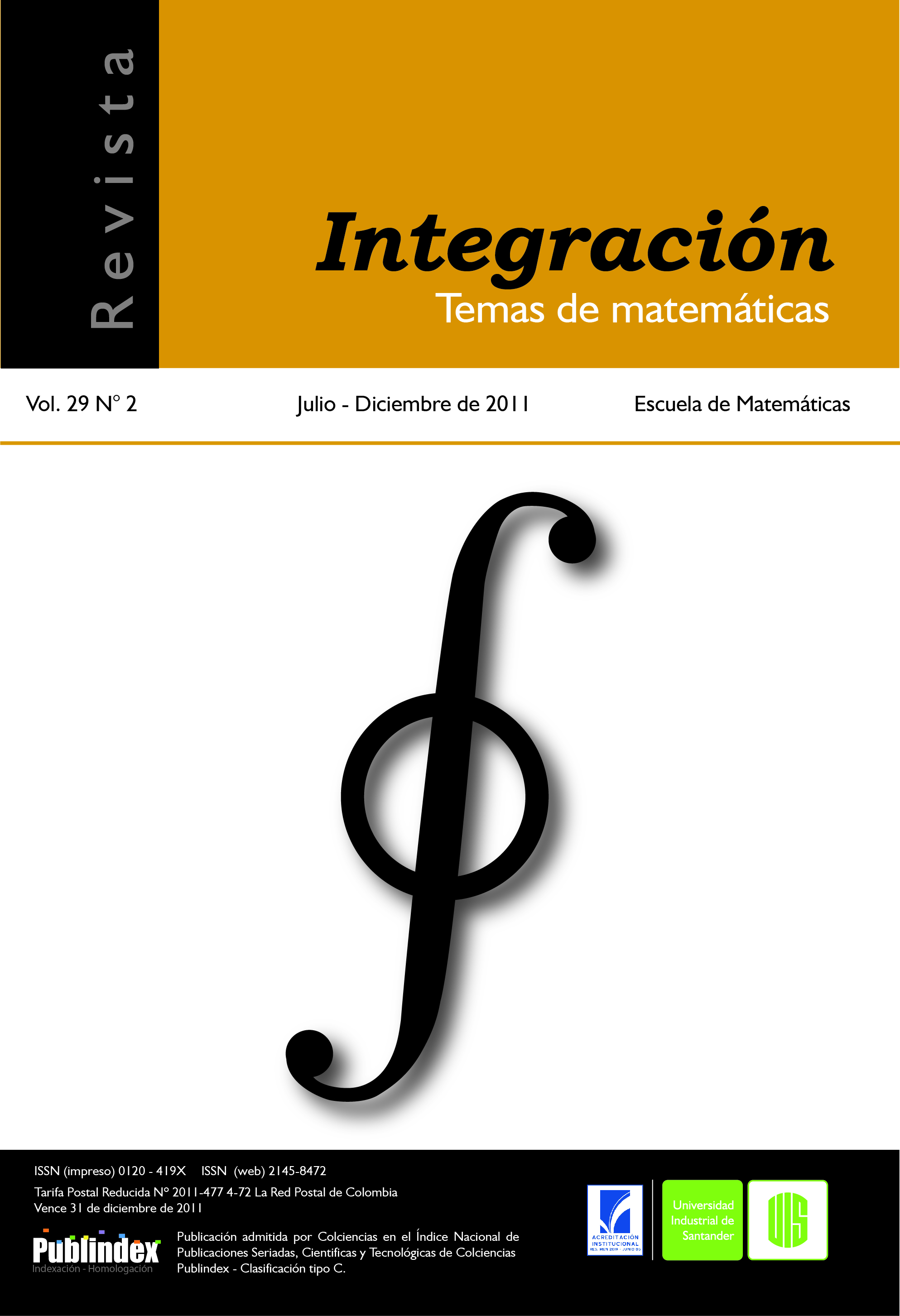Research and Innovation Articles
Solving geometric problems through experimental mathematics: use of dynamic geometric software to construct on unknown locus
Published 2011-11-23
Keywords
- experimental mathematics,
- dynamic geometry,
- locus
How to Cite
Acosta, M. E., Mejía, C., & Rodriguéz, C. W. (2011). Solving geometric problems through experimental mathematics: use of dynamic geometric software to construct on unknown locus. Revista Integración, Temas De matemáticas, 29(2), 163–174. Retrieved from https://revistas.uis.edu.co/index.php/revistaintegracion/article/view/2557
Abstract
Through an example of Euclidean geometry and using the dynamic geometry software Cabri Géomètre, we show here how to follow a process to solve problems via experimental mathematics which include two phases: experimentation and formalization. The problem we solve is as follows: Given a triangle, find the locus for all points in the plane such that the lateral symmetrical triangle to triangle given be rectangle.
Downloads
Download data is not yet available.
References
[1] Acosta M., “Geometría experimental con Cabri: una nueva praxeología matemática”, Educación Matemática 17, núm. 3 (2005).
[2] Borwein J. et al. Experimentation in mathematics, computational paths to discovery. A. K. Peters. USA, 2004.
[3] Baccaglini-Frank A., and Mariotti M.A., “Conjecturing and Proving in Dynamic Geometry: the Elaboration of Some Research Hypotheses”, In Proceedings of the 6th Conference on European Research in Mathematics Education, Lyon, January 2009.
[4] Hanna G., Proof, explanation and exploration: An overview. Educational Studies in Mathematics, Special issue on “Proof in Dynamic Geometry Environments”, 44 (1-2), 5-23, 2000.
[5] Kuntz G., Démarche expérimentale et apprentissages mathématiques. Dossiers de la VST, en ligne http://www.inrp.fr/vst/Dossiers/Demarche_experimentale/sommaire.htm
[6] Ministerio de Educación Nacional. Lineamientos Curriculares: Matemáticas, Bogotá, Magisterio, 1998.
[7] Moise E., and Downs F. Jr., Geometría Moderna. Fondo Educativo Interamericano, S.A. Massachusetts, 1964.
[8] Yerushalmy M., Chazan D. & Gordon M., Guided inquiry and technology: A yearlong study of children and teachers using the Geometric Supposer. (Technical Report No. 90-8). Newton, MA: Education Development Center, 1988
[2] Borwein J. et al. Experimentation in mathematics, computational paths to discovery. A. K. Peters. USA, 2004.
[3] Baccaglini-Frank A., and Mariotti M.A., “Conjecturing and Proving in Dynamic Geometry: the Elaboration of Some Research Hypotheses”, In Proceedings of the 6th Conference on European Research in Mathematics Education, Lyon, January 2009.
[4] Hanna G., Proof, explanation and exploration: An overview. Educational Studies in Mathematics, Special issue on “Proof in Dynamic Geometry Environments”, 44 (1-2), 5-23, 2000.
[5] Kuntz G., Démarche expérimentale et apprentissages mathématiques. Dossiers de la VST, en ligne http://www.inrp.fr/vst/Dossiers/Demarche_experimentale/sommaire.htm
[6] Ministerio de Educación Nacional. Lineamientos Curriculares: Matemáticas, Bogotá, Magisterio, 1998.
[7] Moise E., and Downs F. Jr., Geometría Moderna. Fondo Educativo Interamericano, S.A. Massachusetts, 1964.
[8] Yerushalmy M., Chazan D. & Gordon M., Guided inquiry and technology: A yearlong study of children and teachers using the Geometric Supposer. (Technical Report No. 90-8). Newton, MA: Education Development Center, 1988
